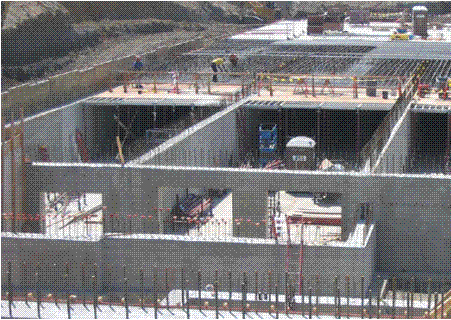At 1.2 million square feet, there is nothing small about the Indianapolis International Airport’s Midfield Terminal. The massive construction project was so complex that planning for the original design began more than 30 years ago. It wasn’t until 1999 that Wessler Engineering was given the green light to move forward on an ambitious effort to cost-effectively manage water-quality treatment and aircraft deicing for the facility.
Its roles were largely twofold:
As the project’s stormwater master planner, Wessler was charged with developing drainage guidelines and a stormwatemanagement plan. The firm also was responsible for the evaluation, design, constructionadministration and part-time inspection of deicing controls and water-quality treatment for airside drainage.
By 2008, the facility was fully operational and accommodating clean stormwater, as well as stormwater runoff contaminated with aircraft andpavement deicing fluids. The firm employed a dual-collection system that segregates gate area runoff—where primary aircraft deicing often occurs—from the remainder of the ramp. Stormwater runoff is treated by two massive water-quality systems; it then flows to a diversion mechanism that directs the run ff to either high-concentrate storage, low-concentrate storage or the receiving waterway.
A 12,400-gallon-per-minute pump station transfers contaminated runoff from an underground storage facility to a lined, covered storage facility in the airfield. From this facility, runoff is pumped to another control facility before being discharged to the city of Indianapolis sanitary sewer system.
The underground facility is up to 40 feet deep at its base and is strong enough to supporthe weight of aircraft activity overhead. To accommodate thenecessary depth and ground-water conditions, engineers designed thicker concrete walls and placed shear keys along its length to increase the structure’dead load.
Designing the stormwater retention and diversion facility and necessary infrastructure was no small feat. “The under-ground facility is the size of a football field,” says Wessler
President Brent Siebenthal.
The facility was sized using
30 years of hourly precipitation data. The stormwater and runoff facilities also are equipped with a supervisory control and data acquisition system for remote control and monitoring. “Wessler led a team of 15 consultants during design and construction and coordinated stormwater design efforts for the entire project,” says Bill Leber,
Wessler project manager.

No comments:
Post a Comment